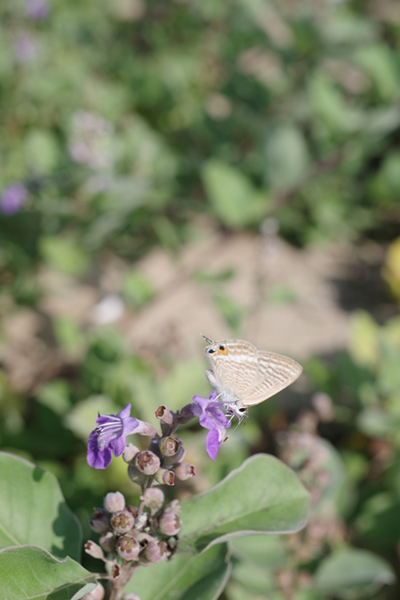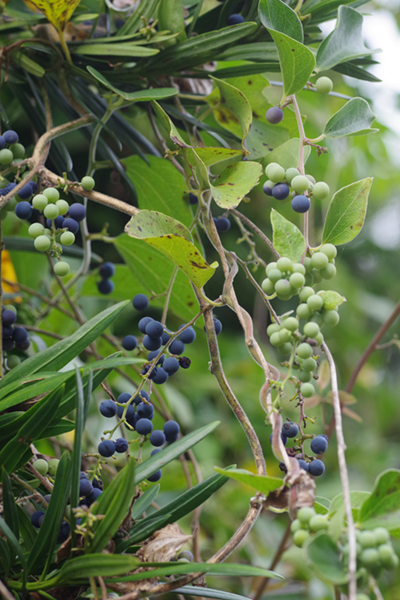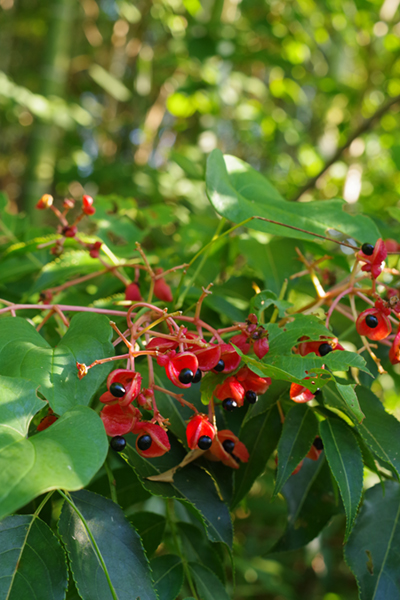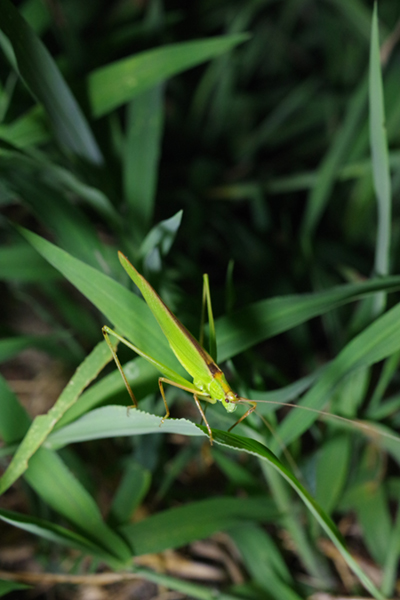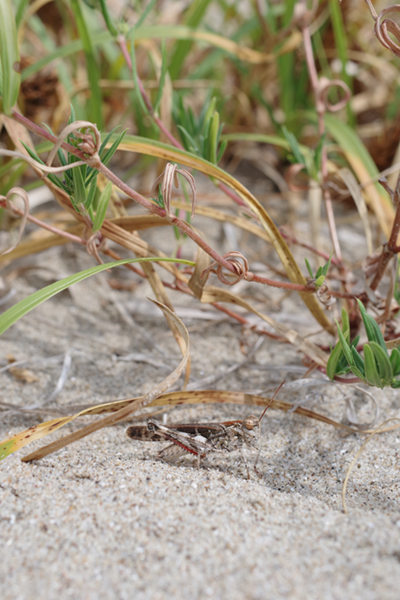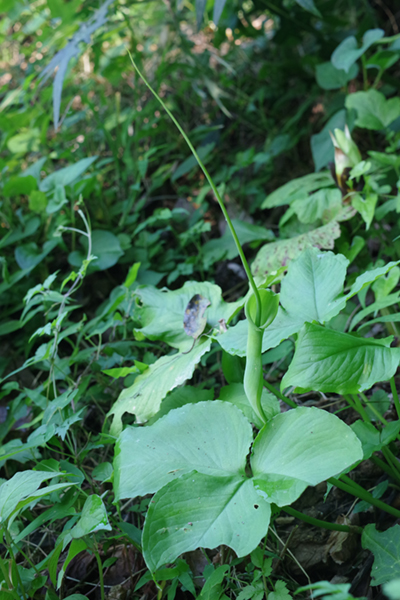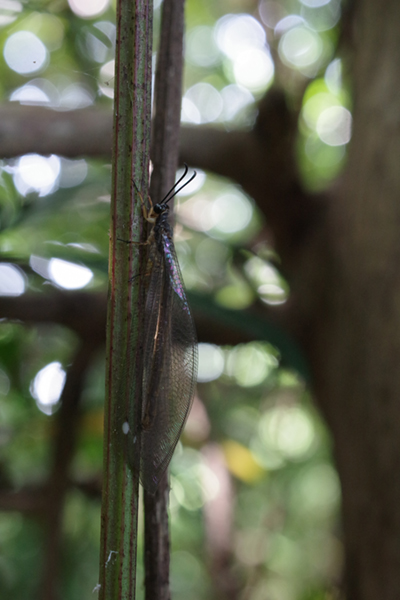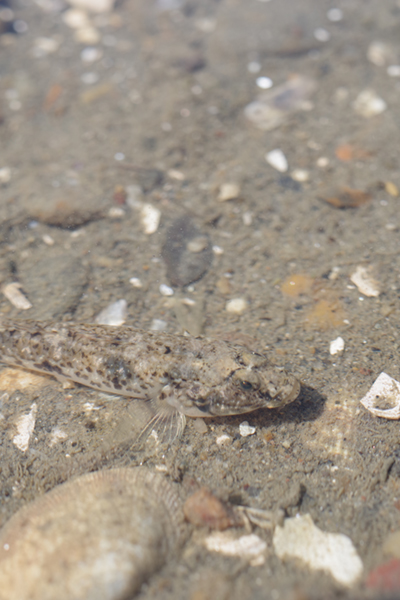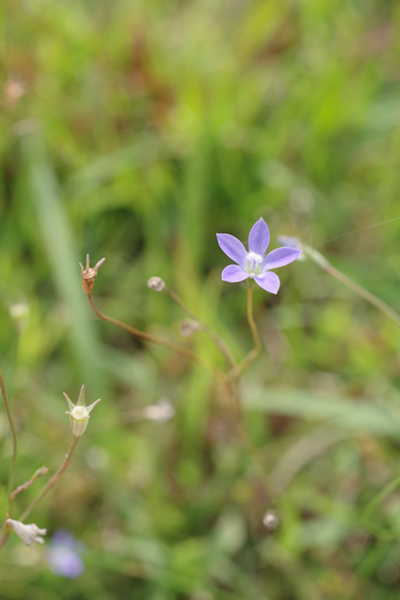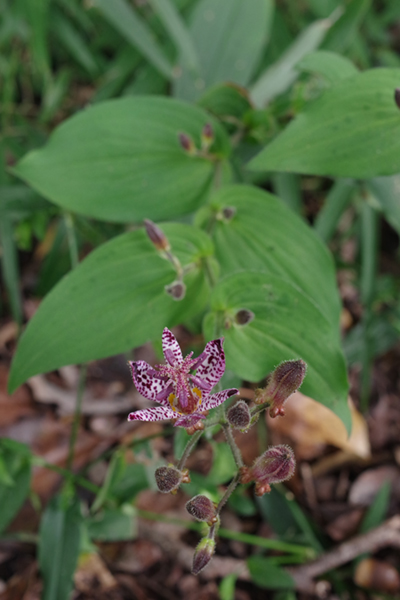
“Toad lily”
In mid-October, numerous autumn flowers were in bloom near the nature park. Indian lettuce, blue dayflower, creeping smartweed, cotton rosemallow, etc. In particular, goldenrod was blooming profusely, turning the wasteland yellow. Toad lilies are rarely seen on the pen. Here, they bloomed in abundance, signalling the deepening of autumn. [October 2025]
Tricyrtis hirta
10月半ばに咲く、ホトトギスの花。和名の由来は、花の模様を、鳥のホトトギスの腹部に見立てたとされています。英名では、トード・リリー。ヒキガエルのユリという意味になります。
